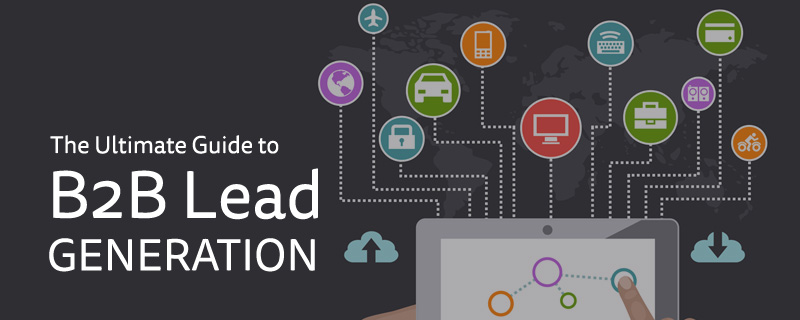BLOG
The Ultimate Guide to B2B Lead Generation
Every company is faced with how they can best acquire customers for their products. This issue is especially prevalent amongst B2B companies that are looking to generate leads. Fortunately, there are plenty of ways that Business To Business (B2B) companies in particular can attempt lead generation successfully.
This guide will be broken down into several sections that cover the nuts and bolts of effective B2B lead generation strategies.
Essentials for an attractive landing page for B2B
Your landing page is often the first thing that visitors to your website see. Most savvy B2B companies will include some brief information about their company and its products. They’d also include an offer, such as a special set of information or a free trial of what the company offers.
Your design should be cohesive and uncluttered. Like taking your future customers into a journey through your brand and products. It’s up to you to lead visitors to the right places!
HubSpot recommends paying attention to your formatting and use contrasting colours to guide visitors towards converting.
Why B2B content marketing is important
Content marketing is widely praised as the most important part of an organisation’s marketing efforts, and for good reason. No matter how good your site looks or how many hours you put into the design, without good content your readers will not stay on it very long.
Just so we are clear: any guide to B2B lead generation would be incomplete without discussing content marketing.
The most important thing to know about content marketing specifically for B2B lead generation is that you need to add value with your content. You may accomplish that by helping your visitors answer a question. Or maybe you are enlightening them about a new trend. Even if you are simply entertaining them –depending on the nature of your company as well as your industry– it all comes down to content.

Social media marketing for B2B
In our increasingly connected society, social media has a tremendous amount of influence over buying decisions. Marketers have taken notice, and are responding by paying an increasingly larger amount of attention to social media networks. By some projections, social media marketing budgets will double over the next five years.
To find success with social media marketing, you must understand both the channel that you are using and the people you are looking to target for lead generation. For example, a site like Twitter, which restricts users to 140-character tweets, is excellent for small bits of information like interesting facts or quick updates on current events.
So then, first you should understand the best types of messages for the specific social networks you are using. Then you can begin to tailor your social media marketing towards the demographics that are most prevalent on these networks.
For example, according to the Pew Research Center, Instagram and Twitter are especially popular with younger adults and city dwellers. On the other hand, LinkedIn sees lots of use from university graduates and professionals at the higher levels.
Through trial and error your organisation will get better at targeting the right prospects in the right places!
Remarketing for B2B
Remarketing is a more modern form of marketing. It involves attracting people who already visited your website to come back and convert your offer. Remarketing can be done through the Google AdWords Remarketing tool, or through other techniques such as email marketing.
The most integral part of B2B remarketing is making sure that you are able to tailor your remarketing messages to the specific interests of your prospects. For example, if a visitor browsed to a specific product page or checked out a particular offer, be sure that your remarketing efforts are focused on that specific product or offer.
Google AdWords for B2B
Google AdWords allows links to your website to be displayed on both Google search results pages and other areas of the Web that are a part of Google’s Search Network. AdWords is one of the most common forms of PPC advertising.
To reach success with AdWords, remember to choose your keywords carefully. You can tweak your campaign as necessary. You may need to experiment with different keywords and different kinds of targeting. An example of this would be an exact match vs a broad match to determine what works best.
It is also critical to track your results so you know which AdWords keywords are getting the most clicks and conversions for your investment.
We encourage you to try and experiment till you find the right fit as Business to Business strategies are very specific to each business. The success of any campaign will be based in your unique approach and use of each of these tools. So, as you can imagine, getting the hang of these will be a huge game changer for your business!
Finding the ones that work best for your business and learning as much as you can about them will help you tremendously with your efforts to generate leads for your company.
How do you handle your B2B approach? Do you have any strategy in place? Tell us in the comments below!











